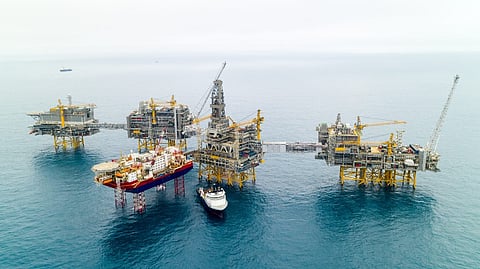EXPLAINER | How Norway's upcoming election will affect the oil and gas industry
Norway's general election on September 7-8 is expected to be a close race between a centre-left bloc led by the incumbent Labour Party, and a centre-right bloc dominated by the populist Progress Party and centre-right Conservatives.
The outcome could have an impact on energy and power supplies to Europe and the management of Norway's huge sovereign fund.
Prime Minister Jonas Gahr Stoere's Labour is looking to extend its rule after returning to power in 2021, following eight years of Conservative-led governments. Labour has led a minority government, supported by the Socialist Left and the rural-based Centre Party.
Oil and gas
Norway is Europe's top gas supplier, replacing Gazprom after Russia's 2022 invasion of Ukraine. Its role is set to grow as the European Union plans to phase out use of Russian gas by 2027, but exploiting new oil and gas reserves is critical to slowing down an expected production decline.
The election could decide whether Norway opens new areas for exploration, or if oil companies will remain restricted to existing ones, depending on the influence wielded by the Greens, Liberals and other small parties.
More radical proposals to stop exploration completely are unlikely to gather sufficient support.
Power
Norway produces more power than it consumes and exports the surplus to Europe. Still, some left-wing and right-wing parties are campaigning on limiting exports to the continent.
If that happened, it would be a problem for Norway's neighbours and Brussels. Norway is not in the EU but is part of the single European market and must respect its rules. Restricting power exports would breach them.
Parties are also divided over how to meet growing domestic demand that is eroding Norway's surplus, with little generation capacity added in recent years. Offshore wind is controversial due to its high costs.
Norway has a system of proportional representation whereby 169 lawmakers are elected from 19 geographical districts for a fixed, four-year term. Any party scoring above four per cent support nationwide is guaranteed representation, although a strong showing in individual districts can also yield one or more seats.
No party is expected to win the 85 seats required for an outright majority, so continued minority rule under Labour or the formation of a coalition are the likeliest outcomes.
Polls show nine parties are expected to win seats. On the left, Labour, the Socialists, the Greens, Centre and the Reds; and on the right, the Conservatives, Progress, the Christian Democrats and the Liberals.
If the centre-left wins, Labour's Stoere is expected to remain in office, while a centre-right win could see either Progress Party leader Sylvi Listhaug or Conservative Party head Erna Solberg become prime minister.
The ballot ends on September 8 at 19:00 GMT, when the first exit polls are expected. Results could become clear late that evening, though the final outcome may not be known until the following day. The exact combination of parties in the cabinet will depend on post-election negotiations.
(Reporting by Terje Solsvik, Nerijus Adomaitis and Nora Buli; Editing by Aidan Lewis)


